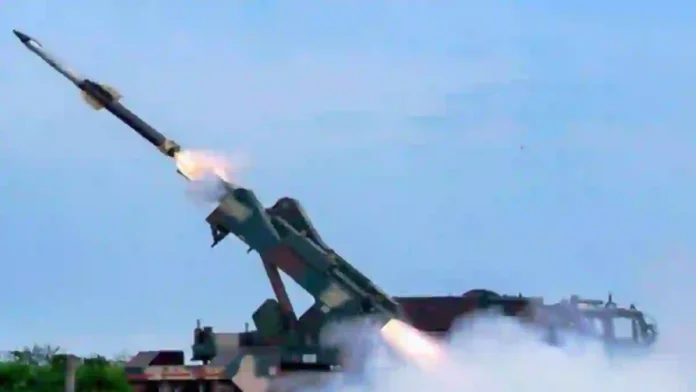The Indian defence sector is witnessing heightened activity and anticipation as leading companies prepare for a major bidding war following the Indian Army’s proposal to procure Quick Reaction Surface-to-Air Missile (QRSAM) systems worth ₹30,000 crore. This procurement, expected to receive approval soon from the Defence Acquisition Council, marks a significant step in modernizing India’s air defence capabilities and comes on the heels of recent operational successes, notably during “Operation Sindoor,” where India’s multi-layered air defence network effectively neutralized aerial threats from Pakistan.
QRSAM, developed indigenously by the Defence Research and Development Organisation (DRDO), is designed for high mobility and operational flexibility. It can detect, track, and engage multiple targets—including hostile fighters, helicopters, and drones—while on the move or during short halts, making it ideal for protecting ground forces in dynamic battlefield conditions.
Read- Rudrastra Hybrid UAV Passes Key Army Trial At Pokhran With Precision Strike And 170-Km Range
With an operational range of approximately 25–30 km, QRSAM fills a crucial short-range gap between very short-range systems like the Igla-S and L-70 guns and longer-range platforms such as the Akash, MRSAM, and S-400 Triumf systems. The Army plans to induct these systems in several regiments, supplementing existing assets and enhancing rapid response to evolving threats along sensitive borders with Pakistan and China.
The forthcoming procurement will see Bharat Electronics Limited and Bharat Dynamics Limited—both public sector undertakings—co-producing the QRSAM systems, but the open tender process is expected to attract significant interest from private sector and international players as well.
This competitive landscape is further energized by the government’s broader push to indigenize defence production and incorporate advanced technologies, including new radars, jammers, and laser-based systems, to counter modern threats such as drones from China and Turkey.
Looking ahead, the QRSAM deal is just one part of a larger modernisation drive. The Defence Ministry is also considering acquisitions of Intelligence, Surveillance, Target Acquisition, and Reconnaissance (I-STAR) aircraft and Airborne Early Warning and Control Systems (AEW&CS) to bolster real-time battlefield awareness and precision strike capabilities.
Read- Pakistan’s Search For A BrahMos Deterrent: Looking Beyond China
Read- Bharat Forge’s Artillery Journey: From Mockery To ‘Make in India’ Pioneer In Defence Manufacturing
Additionally, the DRDO is developing very short-range air defence systems (VSHORADS) and an ambitious long-range air defence system under Project Kusha, targeting a 350 km range with deployment planned by 2028–2029.
The immediate impact of the QRSAM procurement has been a surge in defence sector stocks, with companies like BEL, BDL, and Paras Defence recording substantial gains, reflecting investor confidence in the sector’s growth trajectory. As the bidding process unfolds, the focus will be on technological innovation, indigenous content, and rapid delivery schedules, setting the stage for further consolidation and advancement in India’s defence industrial base.
The QRSAM procurement is a catalyst for a broader transformation in India’s air defence posture, with defence companies—both public and private—gearing up for intense competition and collaboration.
The future will likely see more such high-value tenders, deeper indigenization, and a continued emphasis on integrating cutting-edge technologies to address the complex and evolving security environment facing the country.
Based On NDTV Video Report
Agencies




